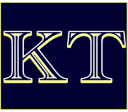
A blueprint for liberty-oriented entrepreneurs
“Fail Fast or Win Big” is written by the excellent Bernhard Schroeder. He is a longtime marketer who has played a part in many startup’s successes and failures. One such example is Amazon in it’s early days.1
He shares a fresh perspective on startup strategies that aligns well with liberty-oriented principles. Let’s explore how this approach can benefit freedom-loving entrepreneurs.
“Business Plans” are Too Damn Slow
As an entrepreneur, you are not in the business of writing business plans. You need to move faster.
Schroeder explains that the traditional business planning method taught in business school has become irrelevant. Modern markets change too rapidly. You can spend months on a plan which is outdated before your product launches.
Instead he recommends to focus on rapid execution and customer feedback. In the words of Facebook founder Mark Zuckerberg”:
Move fast and break things. Unless you are breaking stuff, you are not moving fast enough.
The Lean Model Framework: Agility in Action
Schroeder introduces the Lean Model Framework. This emphasizes speed and flexibility over traditional business planning.
This approach resonates with my entrepreneurial liberty-minded spirit. He recommends to create a business model rather than a business plan. His four key points of the Lean Model include:
- Using lean resources to maximize efficiency
- Develop rapid prototypes to test ideas quickly
- Seek customer truth through direct engagement with your audience
- Adopt speed and flexibility in your business model
I strongly recommend reading this book yourself. Let’s break these down.
Fast is Flexible
25% of new businesses fail in the first year… 71% by year ten. So fail fast.
The traditional business plan approach is too slow for modern markets. Long term planning is more challenging for businesses than in the industrial era.
One approach is to build a company today that funds your next venture. One such example is the “PayPal mafia” including Elon Musk and Pete Thiel. They leveraged their success in PayPal into new businesses.
Schroeder gives the example of an entrepreneur who resold commodity products: HDMI cables from China. He used this to fund his long-term goals.
You can tap into multiple revenue sources. For example selling directly on your own website. Also leverage platforms like Amazon, EBay, etc. Explore crowd-funding platforms like KickStarter.
Embrace Failure
The sun is a massive failure. The Earth receives only a tiny fraction of the Sun’s total energy output. The number is approximately 0.00000005% (or 5 parts per 10 billion) of the sun’s energy. Those rays that reach the Earth enable life as we know it.
Failure is scary. Feel the fear and do it any way. In the words of LinkedIn Co-Founder Reid Hoffman:
If you are not embarrassed by the first version of your product, you’ve launched too late.
Schroeder recommends to view failure as a learning opportunity. Fail fast to reduce waste and maximize learning. Develop a tolerance for measured risk.
Rapid Prototyping
As an entrepreneur, you are either going to sell something or not. It’s up to you.
Schroeder recommends to quickly create a working prototype – a minimal viable product (MVP). You can then test it in the market. Use tools like 3D printing, online platforms, and local trade shows to get it in front of customers fast. Learn from mistakes and iterate based on feedback.
What is the your product’s unique value proposition? That is, what value does the product or service deliver to the customer? Is it unique and defensible?
How does your relationship with the customer make them feel? Can you segment the market into identifiable groups of customers?
Discover Customer Truth
Schroeder’s experience taught him to continuously engage with customers. This helps to understand their needs. You can use surveys, interviews, and market observations.
Align your product with actual customer market demand. Seek aggressive and relentless feedback. Maintain a “five-star concierge mentality” in customer service.
He quotes the book Brand Gap by Marty Neumeier:
A great brand is one that customers believe has no substitute.
Using Lean Resources
You can leverage networks and resources to operate efficiently. There are many free online tools and crowdfunding platforms to get you started.
Use only essential resources, maintain your agility and reduce initial costs. Investigate low cost manufacturing like print-on demand and sources in China or Mexico.
Go to trade shows in your industry. Choose remote work or shared workspace over an expensive office. Amazon is famous for being frugal. The legend is early employees sat in bare bones “door desks.”2
Embrace the Fail Fast Mindset
Schroeder’s “Fail Fast or Win Big” offers a compelling roadmap for liberty-oriented entrepreneurs. This framework is helpful to stay true to our values when starting a business.
The principles outlined in this book align with the free-market entrepreneurial spirit. Failing fast accelerates the path to success rather than admitting defeat. This lets us learn rapidly while adapting to market conditions.
Call to Action: Take Your First Step Today
It’s time to put these ideas into action. Here’s what you can do right now:
- Identify one area of your business that you can prototype quickly.
- Set a deadline for creating a minimum viable product (MVP) within the next 30 days.
- Reach out to at least five potential customers for direct feedback on your MVP.
Remember, in the world of entrepreneurship, action trumps perfection. Are you ready to fail fast and potentially win big?
Share your thoughts and experiences in the comments below. I look forward to hear how you plan to apply these principles in your business.
Don’t let fear of failure hold you back – embrace it as a stepping stone to success. Your entrepreneurial journey starts now!
